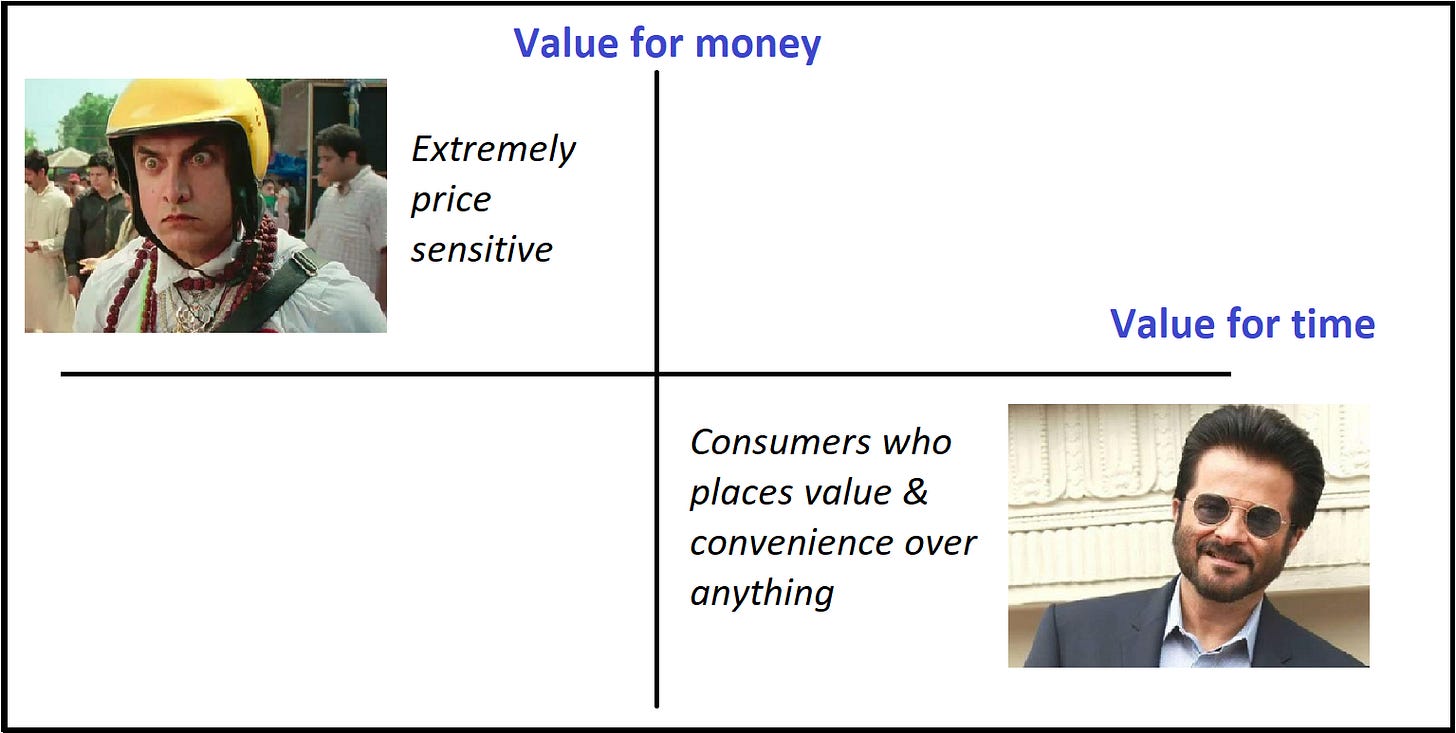2. Value-based pricing
2. Value-based pricing
2.1 Nail pricing before the product
Let me take you to the days when I was building Frontbench along with Deepak. Frontbench was a 1:1 marketplace for online mentorship. We were building a platform to connect students of Tier 2/3 colleges with seniors (who have excelled in their careers) for personal mentorship & career guidance.
A lot of students told that they loved our offering when we offered them the mentorship sessions for free. The moment we started charging a price, BOOM, they vanished!
They liked our product/offering but weren’t ready to pay ₹999-₹1999 for a mentorship session as mentorship wasn’t giving them a tangible end outcome - a certificate or a promise of a new job or a better paycheck.
We realized that students will only pay for a tangible value proposition and wrapped our bag to shut down Frontbench.
We saved ourselves a lot of time. We had our own share of learnings though -
Never ever think of pricing as an afterthought. Nail the pricing even before building the product.
2.2 How to measure the perceived value of your product?
This is a tough one! There isn’t a simple way to understand how much value your product is creating for your users and measure it numerically.
Let’s break it down into two parts for a consumer tech company:-
2.2.1 When you are a new start-up launching your product
You take in various inputs - who your customers are, what are the features they will love in your product, what is their willingness to pay, how readily will they switch to alternatives, etc.
It’s too hard to measure the value your product is delivering to your customers numerically.
I have read a few frameworks like the 10x rule i.e price your product at 1/10th of the value it is delivering to your users but it didn’t make any sense to me.
2.2.2 When you (are old) and have data points
As your product exists for a while, you have data points to measure the value you are delivering to your customers.
Micheal Dearing, a professor at Stanford University has written an interesting case study on eBay that how data points helped them to identify the perceived value of their product & monetize it better.
eBay, offered a feature from its inception that for 25 cents allowed people who sell products on the site to add a photo next to their listings. It wasn’t used much.
But it turned out that sellers who included the pictures had much higher click rates and tended to get a higher selling price. eBay started to market this data along with the feature.
With the benefit of the product data, eBay’s sellers saw that the pictures helped solve a problem and their perceived value skyrocketed.
A feature costing eBay mere 25 cents to host a photograph, along with other optional upgrades, eventually generated hundreds of millions a year in pure profits.
2.3 Discovering the perceived value can take time
In 2005, LinkedIn decided to monetize its product. The company started by identifying the features that about 90% of customers didn’t use regularly.
LinkedIn (LI) concluded that its service was worth more to the heavy users than it was too casual ones. Guess what? LI killed almost 10% of features.
Power search and the ability to contact other members became the basis of premium accounts.
Yes, the heavy users were willing to pay more. Premium accounts have produced more than ₹1,500 crores in revenue for LinkedIn over the last four quarters.
2.4 Value-based pricing and India’s B2C consumer tech space
Value-based pricing in the consumer tech space is extremely difficult in a price-sensitive market like India.
We are a time rich & money poor country.
This is exactly the opposite to US and western countries where people are more than willing to pay for faster streaming service, better display resolution on OTT, better user experience, etc.
While working on assessing how much value your product is creating for your users; it’s important to understand how your users measure the value of your product. (Do they value convenience/time or do they value money?)
